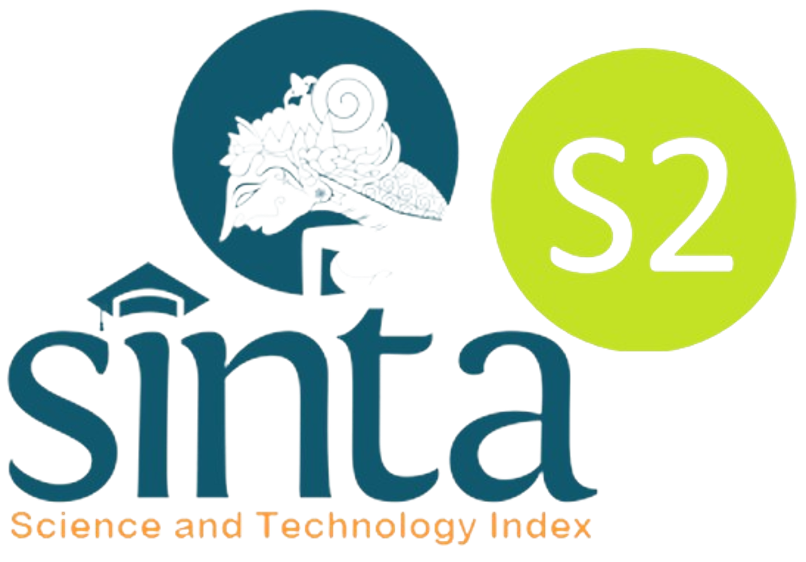Learning Obstacle Analysis of Indonesian Primary Students on Rectangular Concept and its Altenative Solutions
Abstract
This study was aimed at analyzing students’ learning obstacles and mistakes in mathematical answers on the concept of rectangle. The study involved 28 junior high school students in Surakarta, Central Java, using a quantitative method. Based on the results of data analysis, 5 types of students’ learning obstacles based on their answers were identified including variation of information context, concept image, relationship between rectangle’s area and its width, student’s ability to cope with questions, and relation between one concept to another. The alternative to overcome thelearning obstacles and mistakes in mathematical answers was by applying a didactic design which consisted of lesson plans, students’ worksheet as well as prediction of response and didactic anticipation.
Keywords: Learning obstacles, mistakes in mathematical answers, didactic design.
Tujuan penelitian ini adalah menganalisis hambatan belajar dan kesalahan jawaban matematika siswa pada konsep bangun segiempat. Penelitian ini melibatkan 28 siswa salah satu Sekolah Menengah Pertama (SMP) di Surakarta, Jawa Tengah, dengan menggunakan metode deskriptif kualitatif. Berdasarkan hasil analisis data, terindentifikasi 5 tipe hambatan belajar berdasarkan indikator kesalahan jawaban matematika siswa yaitu tipe konteks variasi informasi, concept image, hubungan keliling dan luas segiempat, kemampuan siswa dalam menyelesaikan soal soal, dan koneksi antar konsep. Alternatif untuk mengatasi hambatan belajar yang menyebabkan kesalahan jawaban tersebut, salah satunya yaitu dengan menerapkan desain didaktik yang terdiri dari RPP, lembar kerja siswa serta prediksi respons dan antisipasi didaktik.
Kata Kunci: Hambatan belajar, kesalahan jawaban matematika, desain didaktik.
Full Text:
PDFReferences
Ciltas, A. & Tatar, E. (2011). Diagnosing Learning Difficulties Related to the Equation and Inequality that Contain Terms with Absolute Value. International Online Journal of Educational Sciences, 3(2), 461-473.
Nuharini, D. & Wahyuni, T. (2008). Matematika Konsep dan Aplikasinya untuk VII SMP dan MTs. Surakarta: Departemen Pendidikan Nasional.
Ruthven, K. (2009). Design Tools in Didactical Research:: Instrumenting the Epistemological and Cognitive Aspects of the Design of Teaching Sequences. Educational Researcher. 38, 329.
Simon, M. A., & Tzur, R. (2004). Explicating the role of mathematical tasks in conceptual learning: An elaboration of the hypothetical learning trajectory. Mathematical thinking and learning, 6(2), 91-104.
Strauss, A., & Corbin, J. (1990). Basics of qualitative research: Grounded theory procedures and techniques . Newbury Park, CA: Sage Publications, Inc.
Suherman, E., Herman, T., Nurjanah, Prabawanto, S., Suryadi, D., Suherman, Rohayati, A., Turmudi. (2003). Strategi Pembelajaran Matematika Kontemporer.Bandung: FPMIPA UPI.
Syaban. (2009). Menumbuh kembangkan Daya dan Disposisi Matematis Siswa Sekolah Menengah Atas melalui Pembelajaran Investigasi. Educationist, 3(2), 129-136.
Tall, D. & Razali, M.R. (1993). Diagnosing students' difficulties in learning mathematics. International Journal of Mathematical Education in Science and Technology, 24(2), 209-222.
Van Den Heuvel-Panhuizen, M. (2003). The didactical use of models in realistic mathematics education: An example from a longitudinal trajectory on percentage. Educational Studies in Mathematics, 54(1), 9-35.
Verschaffel, L., Greer, B. and de Corte, E., Making Sense of Word Problems. Lisse: Swets & Zeitlinger Publishers.
Warfield, V. A. (2006). Invitation to Didactique. University of Washington.
Refbacks
- There are currently no refbacks.
Copyright (c) 2018 Jurnal Pendidikan Progresif

This work is licensed under a Creative Commons Attribution-ShareAlike 4.0 International License.
View My Stats

The copyright is reserved to The Jurnal Pendidikan Progresif that is licensed under a Creative Commons Attribution-ShareAlike 4.0 International License.





